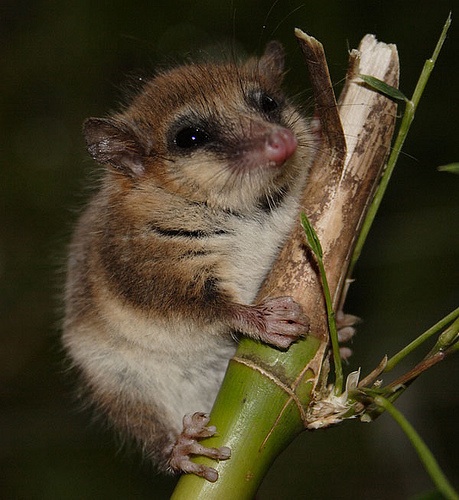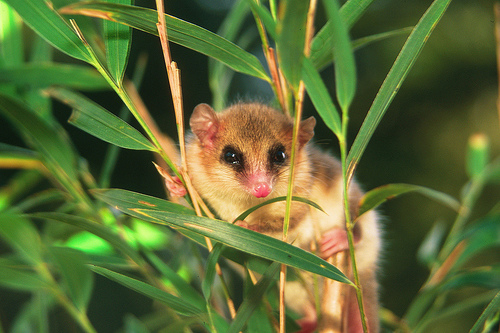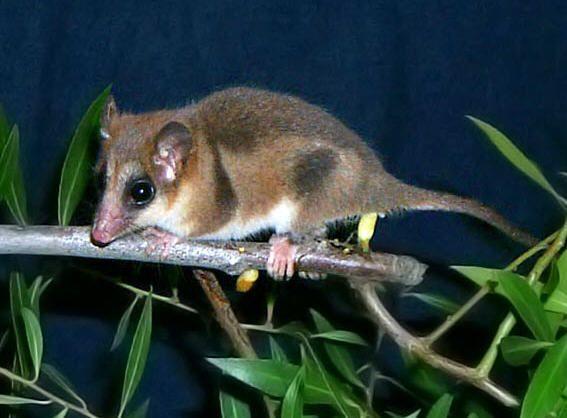Microbiotheria & Microbiotheridae -- Silky and mouse-like vestige of an age of marsupials!
Microbiotheridae: Dromiciops gliroides



Origins
This order of marsupials( Microbiotheria means "little wild animal") contains only one family (Microbiotheridae) with one living species ( Dromiciops australis, common name "monito del monte", translated into English as little mountain monkey).
This order is said to have evolved in the time of spectacular marsupial radiation in South America and then migrated across Antarctica all the way to Australia. It was thought that this order was extinct for at least 11 millions years until this dimunitive little animal was found leading a charming life in the Andes of Chile and Argentina.
This order is especially interesting because it seems to be more closely related to current and fossil Australian Marsupials than the American ones. This is a tentative hypothesis put forward by Aplin and Archer(1987) based on molecular and anatomical investigations. More work is still being done on this fascinating species/family/order and its link to ancestral marsupials of Australia.
Physical Characteristics
Dromiciops is a small animal with a long, moderately prehensile tail and silky, dense coat of fur. Its ears are short and rounded. The tail is long and may serve as a site for storing fat to maintain the animal during hibernation. The pouch or marsupium is well developed. Dromiciops has a peculiar skull, especially compared to that of the didelphids (with which it was once classified). The premaxillae(bone that supports incisors) is elongated and the nasals(bridge of the nose) are expanded posteriorly. The teeth are also unusual. The upper and lower incisors are broad and shaped like a spoon. The uppers form a semicircle or U-shaped dental arcade, while the lowers are splayed outward. The cusps of the cheekteeth are low and rounded compared to those of didelphids. The dental formula, however, is identical to that of the Didelphidae and like didelphids, Dromiciops has there are three or more pairs of incisors in each jaw.
Geographic Distribution
Monitos del monte live in dense, humid vegetation in the mountains of southern Chile and Argentina. They have a special liking for thickets of bamboo. Monitos del monte are primarily insectivorous, feeding in the trees as well as on the ground, but they also consume vegetation.
The Monito del Monte mainly live in trees, where they construct spherical nests of water resistant bamboo leaves. These leaves are then lined with moss or grass, and placed in well protected areas of the tree. The nests are sometimes covered in grey moss as well to additionally conceal the animal. While these nests protect the Monito del Monte from the cold, they are also used as a place to hibernate when the weather becomes too cold.
Reproduction
The Monito del Monte normally reproduces in the spring and can have a litter size varying anywhere between 1-4 young. When the young are stable enough to leave the pouch they are nursed in a nest, and then carried on the mothers back. When the young are weaned, they still remain in association with the mother. Males and females both reach sexual maturity after 2 years.
Feeding Habits
Although Dromiciops gliroides is omnivorous, it does show high consumption of a diversity of fruits. It is believed that at least two species of shrubs owe their seed dispersal to the consumption of their fruit by this unprepossessing little animal. Marsupials are not generally thought of as seed dispersers so this quite a significant discovery.
Videos